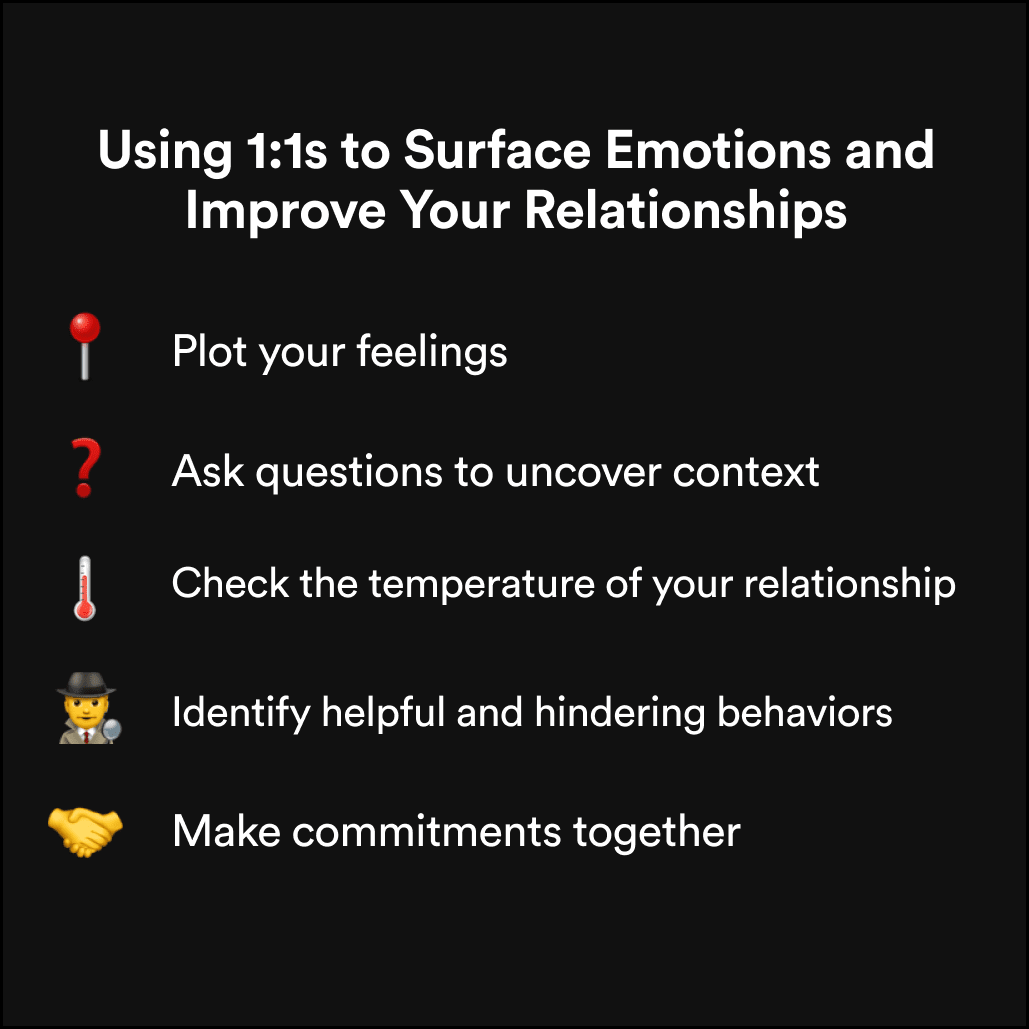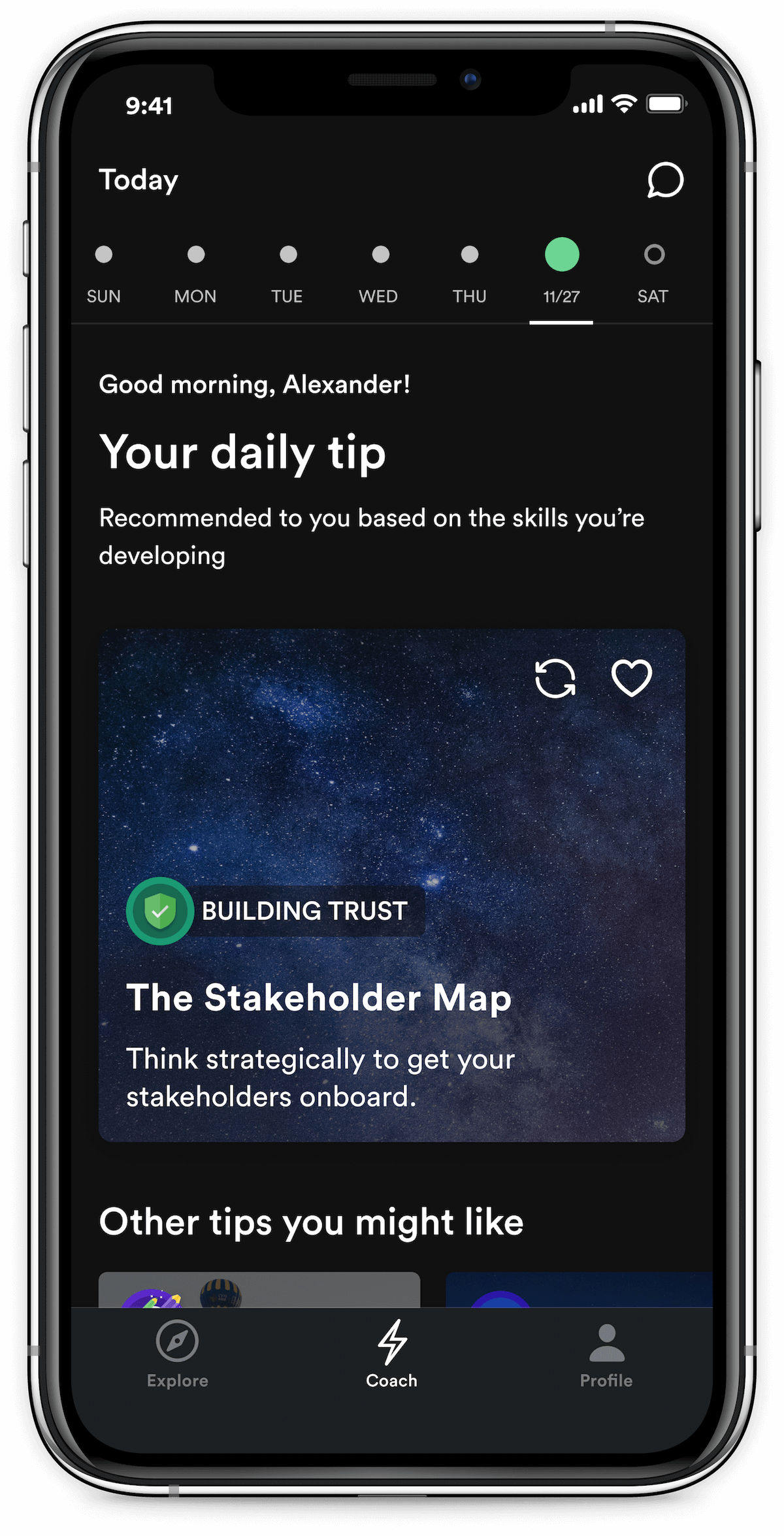Using 1:1s to Surface Emotions and Improve Your Relationships
Use this template for more meaningful 1:1s

Inspired by:
Joshua Stehr, Designer at Bunch & Former Service Design Consultant at Globant

Using 1:1s to Surface Emotions and Improve Your Relationships
It’s good to take a break from projects and progress, and once in a while use your 1:1s to cover how your team members are feeling about their work and your relationship with them.
Here’s how you can run an effective 1:1 so that you and your team member understand each other’s needs.
1. Plot your feelings 📍
Ask your team member to put their emotions on a scale ranging from “terrible” to “great.” You can use the template in the Dive Deeper section.
This is a useful icebreaker to pave the way for deeper conversation. You’ll learn more about your team member’s feelings about their work and relationships - not just the standard small talk.
Pro-tip: Plot your emotions too. Being open about your own feelings helps you relate to each other and keeps the conversation open.
2. Ask questions to uncover context ❓
Now that you know how your team member is feeling, dig deeper with a question like: "What made you feel [positive/negative/ok] today?"
If they’re not feeling great, try to find out why. It could be related to your working relationship, challenges in their project, or something completely unrelated to work. Listen well, playback what you're hearing, and ask follow-up questions to show that you’re genuinely interested and eager to support.
3. Check the temperature of your relationship 🌡️
Establishing an effective working relationship with your team takes work. Show you're committed by asking them how they feel about your relationship using the same scale as before.
Set the tone by saying: “What’s most important is your honest impression, I’m committed to improving things, so don’t hold back.”
• If they're feeling positive, that's awesome! 😎 Ask them why then, try to do more of it! • If it’s negative, try asking: "Tell me more about that - what's not working for you?" • If they're just ok, ask open questions like: "What’s on your mind? How can I do better? How can I help?"
4. Identify helpful and hindering behaviors 🕵️
It’s time to get really tangible so you can find out what’s working and what’s not. Try answering these prompts and invite your team member to do the same:
• 🤩 I appreciate it when… • 👀 I’ve noticed that… • 😓 I struggle when...
Talking through these observations and behaviors is a good way to gain empathy, reveal what to do more of, and find solutions for underlying tensions.
5. Make commitments together 🤝
Between you and your team member, decide what you want to:
Accept - learn to live with 😌 Keep - continue doing 🏃 Change - stop or do differently 🔀
Keep track of your commitments and review them in your next session. This will keep you accountable for continuously working on your relationship.
👯 Put in the work and it will pay off
Don’t just check the box with 1:1s. Use them to understand your team members’ emotions and how they view their relationship with you.
It can be hard at first to talk about emotions at work, but over time, both you and your team will create a more rewarding working relationship together!

Become a world-class leader in two minutes a day